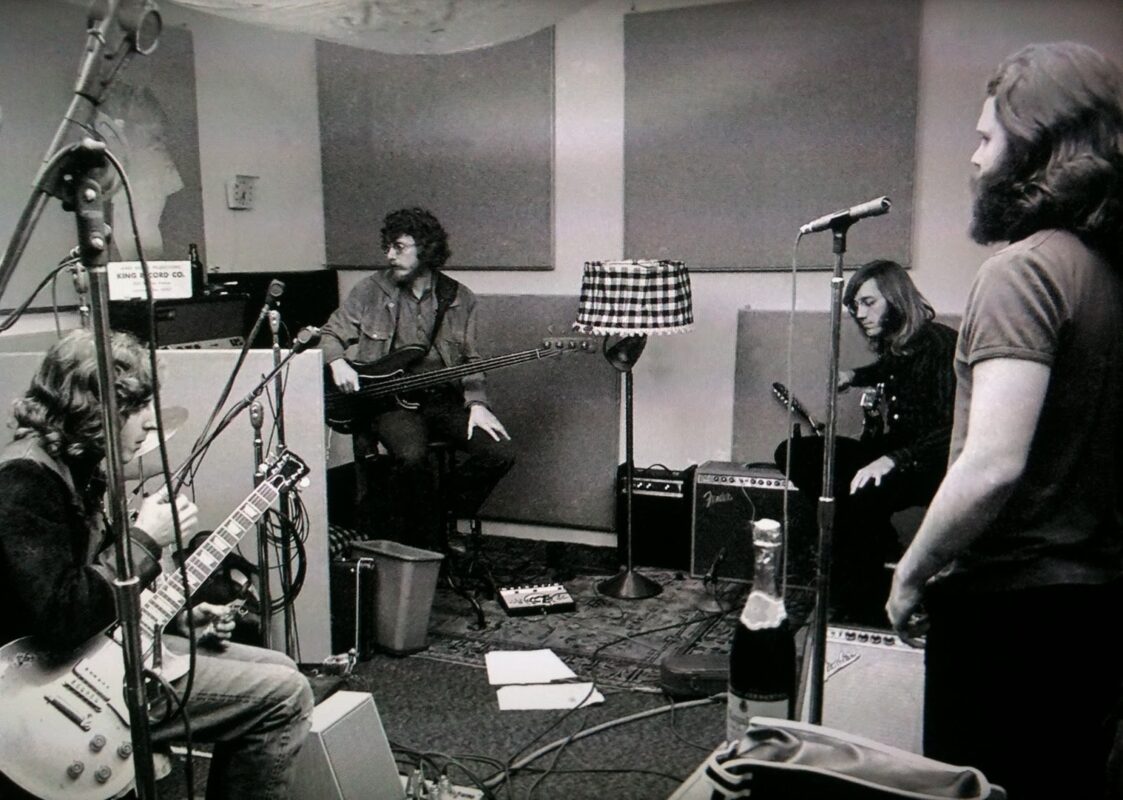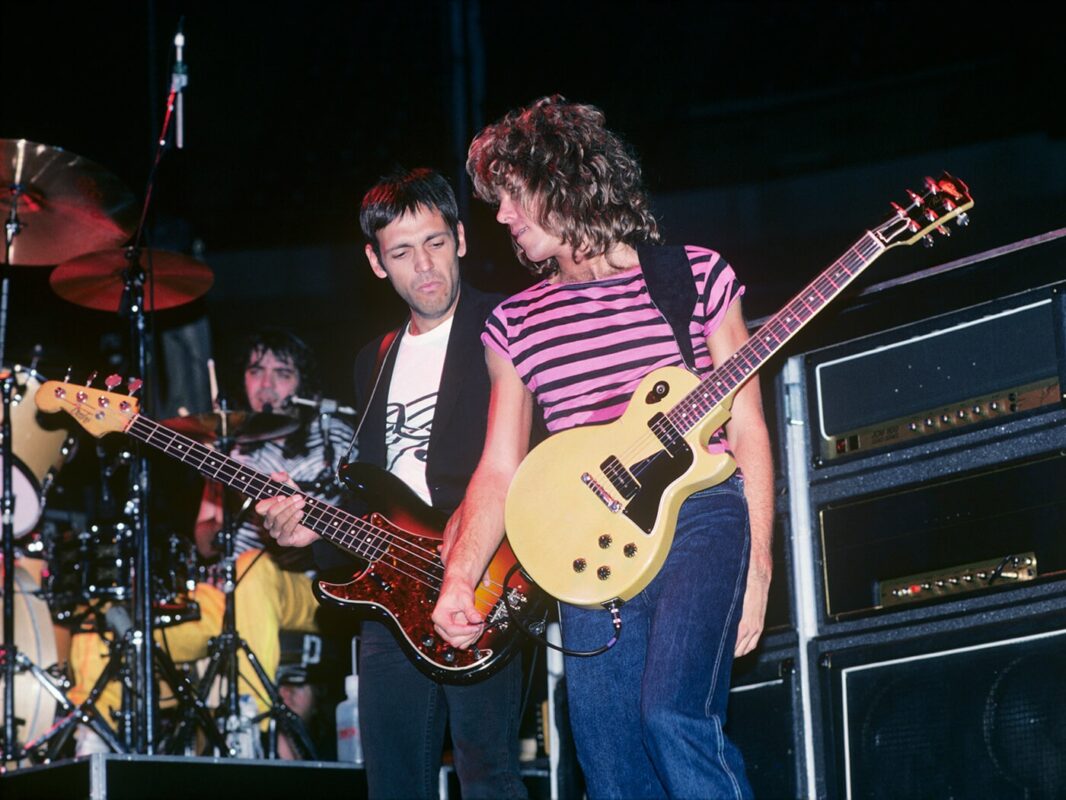Blog
Did The Doors Have a Bass Player? Unraveling the Mystery Behind The Band’s Unique Sound
Contents
The Doors, one of the most iconic rock bands of the 1960s, are best known for their distinct blend of psychedelic rock, blues, and jazz-infused rhythms. With Jim Morrison’s haunting vocals, Ray Manzarek’s powerful keyboards, Robby Krieger’s versatile guitar, and John Densmore’s dynamic drumming, they created a sound that stood out in an era of musical experimentation. But there’s always been one lingering question among fans and newcomers alike: “Did The Doors have a bass player?“
This article will explore the unique structure of The Doors, their approach to music without a traditional bass guitarist, and how they managed to create such a full and captivating sound without a permanent member on bass.
Did The Doors Have a Bass Player?
The Doors were formed in 1965 in Los Angeles, California, when Jim Morrison (vocals) and Ray Manzarek (keyboards) met as students at UCLA. Soon after, they recruited Robby Krieger on guitar and John Densmore on drums. This quartet became the core of The Doors, and it was this lineup that would go on to record their most famous albums, including The Doors (1967), Strange Days (1967), and L.A. Woman (1971).
What made The Doors stand out was their unconventional sound, particularly due to the absence of a full-time bass player. While most rock bands relied heavily on the bass guitar to provide rhythm and depth, The Doors took a different approach.
How The Doors Managed Without a Full-Time Bass Player
So, did The Doors have a bass player? The short answer is: not in the traditional sense. The Doors didn’t include a full-time bassist as part of their core lineup. Instead, Ray Manzarek used his keyboard skills to fill in the sonic gaps that a bass player would typically occupy. He played a Fender Rhodes Piano Bass with his left hand, while simultaneously playing melodies and harmonies on a Vox Continental organ or another keyboard with his right hand.

This technique was revolutionary and allowed The Doors to produce a rich, layered sound without needing a dedicated bassist. Manzarek’s left-hand bass lines were essential to the band’s music, giving songs like “Light My Fire” and “Break on Through” their signature grooves.
Session Bassists in Studio Recordings
While The Doors didn’t have a bass player in their live performances, they did occasionally use session bassists during studio recordings to enhance certain tracks. This was especially true for their later albums, where the complexity of the music called for deeper bass arrangements. Some of the most notable session bassists who contributed to The Doors’ recordings include:
- Larry Knechtel: A prominent session musician who played bass on tracks from The Soft Parade (1969).
- Douglass Lubahn: Played bass on several of The Doors’ studio albums, including Strange Days (1967) and Waiting for the Sun (1968). He was even offered the chance to join The Doors as a full-time bassist but declined.
- Jerry Scheff: Played bass on L.A. Woman (1971), adding a bluesy feel to the album’s tracks. His contributions on “Riders on the Storm” and “The Changeling” are particularly well-known.
Despite these studio collaborations, The Doors remained true to their original setup and continued to perform live without a dedicated bassist. Manzarek’s keyboard bass work was more than enough to carry the band’s live sound, which became a hallmark of their unique performances.
Why Did The Doors Choose Not to Have a Bass Player?
One might wonder why The Doors made the deliberate choice to forgo a traditional bass player, especially in a rock scene where the bass guitar was integral to most bands’ setups. The answer lies in their desire to create a distinctive sound and to break away from conventional rock band norms.
Ray Manzarek once explained that The Doors’ decision to avoid having a bass player was both practical and creative. By playing the basslines on his keyboards, Manzarek was able to have complete control over the rhythm and harmonies in real-time, adding to the band’s spontaneous and improvisational style during live shows.
Moreover, this approach gave Jim Morrison more freedom as a frontman. Without the need for an additional musician, the band’s arrangement left space for Morrison’s commanding stage presence and poetic lyricism to take center stage. Morrison’s performances were often theatrical and unpredictable, and the absence of a bass player allowed for more fluidity in the band’s sound, enhancing their live dynamics.
The Legacy of The Doors’ Unique Sound
The Doors’ decision to function without a full-time bass player contributed to their lasting legacy. Their music stands as a testament to how limitations—or, in their case, an unconventional lineup—can lead to greater creativity. Songs like “People Are Strange” and “Roadhouse Blues” showcase their ability to craft memorable tunes without adhering to traditional rock structures.

This approach influenced future bands and musicians who sought to break away from the conventional band setup. The Doors proved that you didn’t need to follow the standard blueprint of rock music to create something powerful and enduring.
Even today, The Doors’ music continues to inspire new generations of musicians. Their ability to create such a rich, full sound without a bassist is often cited as one of the band’s most innovative aspects.
Famous Songs Without a Bass Player
While session musicians contributed to some of The Doors’ most famous recordings, there are plenty of iconic songs where Ray Manzarek’s keyboard bass provided the low-end groove. Some of these include:
- “Light My Fire”: One of the band’s most famous tracks, featuring Manzarek’s iconic keyboard riff and his skillful use of the Fender Rhodes Piano Bass.
- “Break on Through (To the Other Side)”: The opening track on their debut album, where Manzarek’s keyboard bass drives the song’s energy.
- “When the Music’s Over”: A ten-minute epic from Strange Days that highlights the interplay between Morrison’s vocals and Manzarek’s basslines.
In conclusion, while The Doors didn’t have a traditional bass player in their live performances, Ray Manzarek’s innovative use of the keyboard bass filled that role, contributing to the band’s iconic sound. Their unique approach, combined with occasional session bassists in the studio, helped solidify their place as one of the most influential rock bands of all time. The Doors’ music continues to inspire fans and musicians alike with its boundary-pushing creativity.
If you’re a fan of The Doors and want to celebrate their legacy, check out the exclusive The Doors T-shirts available at Bipubunny Store. Featuring bold designs that capture the spirit of the band, these T-shirts are perfect for showing off your love for one of rock’s most legendary acts. Don’t wait—grab yours today and wear a piece of rock history!

